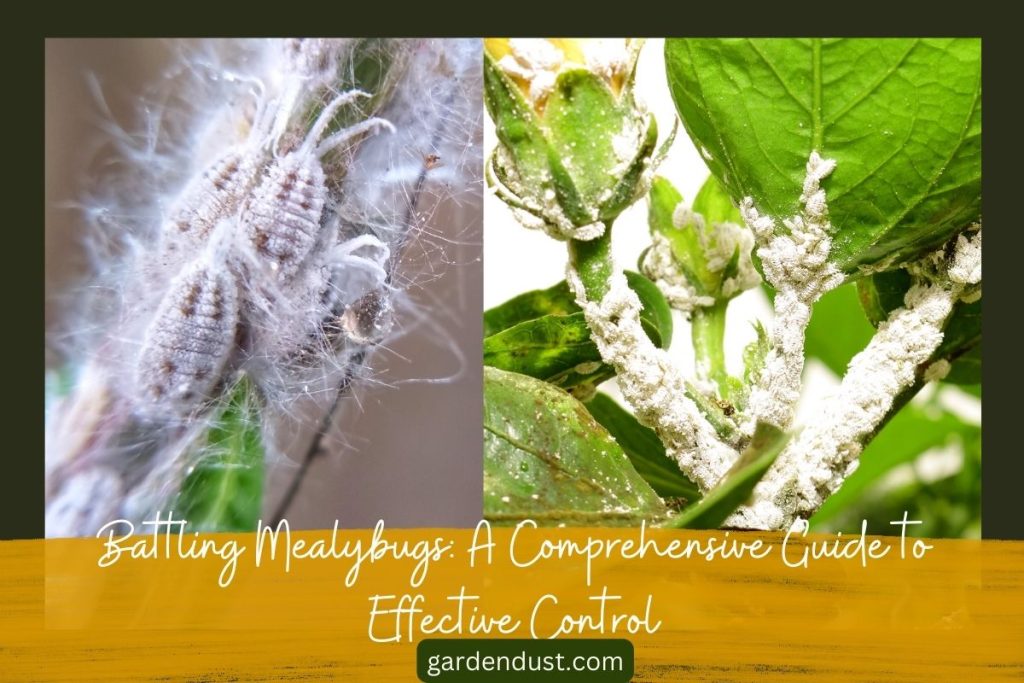Mealybugs are tiny, soft-bodied insects that can wreak havoc on your indoor and outdoor plants, draining their vitality and compromising their overall health. These pests are notorious for their ability to rapidly reproduce and infest plants, making them a common challenge for gardeners and plant enthusiasts. In this guide, we will delve into the world of mealybugs, exploring their characteristics, the damage they can cause, and, most importantly, how to effectively eliminate and prevent their presence.
Understanding Mealybugs:
Mealybugs belong to the insect family Pseudococcidae and come in various species, each with distinct appearances. They are typically recognized by their white, cottony or waxy coatings that serve as protective shields. These insects feed on plant sap, using their needle-like mouthparts to pierce plant tissues and extract nutrients. Their feeding weakens the plants, stunts their growth, and makes them more susceptible to diseases.
Identifying Mealybug Damage:
Detecting mealybug infestations early is essential for effective control. Look for these signs:
- Cottony Residue: The white, cotton-like substance on plant stems, leaves, and crevices is a telltale sign of mealybugs.
- Stunted Growth: Infested plants may show reduced growth, wilting, or yellowing of leaves.
- Honeydew: Mealybugs excrete a sugary substance called honeydew, which can attract ants, mold, and sooty mold, causing further damage.
- Leaf Curling: In severe infestations, leaves might curl or distort due to mealybug feeding.
READ ALSO:-How To Prevent Tomato Fruitworms:- Symptoms & Cause
Effective Elimination Strategies:
Taking prompt action is crucial when dealing with mealybugs. Here’s a step-by-step process to get rid of them:
- Isolate Infested Plants: Move the affected plant away from healthy ones to prevent the infestation from spreading.
- Prune and Dispose: Trim off heavily infested parts and dispose of them away from your garden. This helps eliminate a significant portion of the population.
- Mechanical Control: Gently remove mealybugs using a soft brush, cotton swab dipped in alcohol, or a strong jet of water. Repeat this regularly to control their numbers.
- Natural Predators: Introduce beneficial insects like ladybugs, lacewings, and parasitic wasps that feed on mealybugs. This can provide long-term control.
- Insecticidal Soap or Neem Oil: These products suffocate and disrupt mealybugs’ protective wax layer, effectively killing them. Follow product instructions for safe application.
- Systemic Insecticides: These products are absorbed by the plant and kill mealybugs when they feed on sap. Exercise caution and follow label directions to minimize potential harm to beneficial insects and pollinators.
- Diatomaceous Earth: Sprinkle this natural powder on plants to create a barrier that damages mealybugs’ protective coatings, leading to their demise.
Preventive Measures:
Preventing mealybug infestations is the key to maintaining healthy plants:
- Regular Inspections: Routinely check your plants for signs of mealybugs or other pests, especially when bringing new plants into your collection.
- Proper Watering and Pruning: Healthy plants are more resilient to pests. Avoid overwatering and maintain good airflow to prevent moisture-related issues.
- Quarantine New Plants: Keep new additions isolated for a few weeks and monitor them for signs of pests before integrating them with your existing plants.
- Neem Oil Sprays: Apply neem oil or insecticidal soap as a preventive measure, particularly if you have a history of mealybug problems.
Mealybugs might be persistent, but armed with the right knowledge and strategies, you can successfully combat their infestations and safeguard your beloved plants. Regular monitoring, swift action, and a combination of mechanical, biological, and chemical control methods can significantly reduce their impact. By implementing preventive measures and staying vigilant, you can maintain a flourishing garden that’s free from these pesky pests. Happy Gardening….







